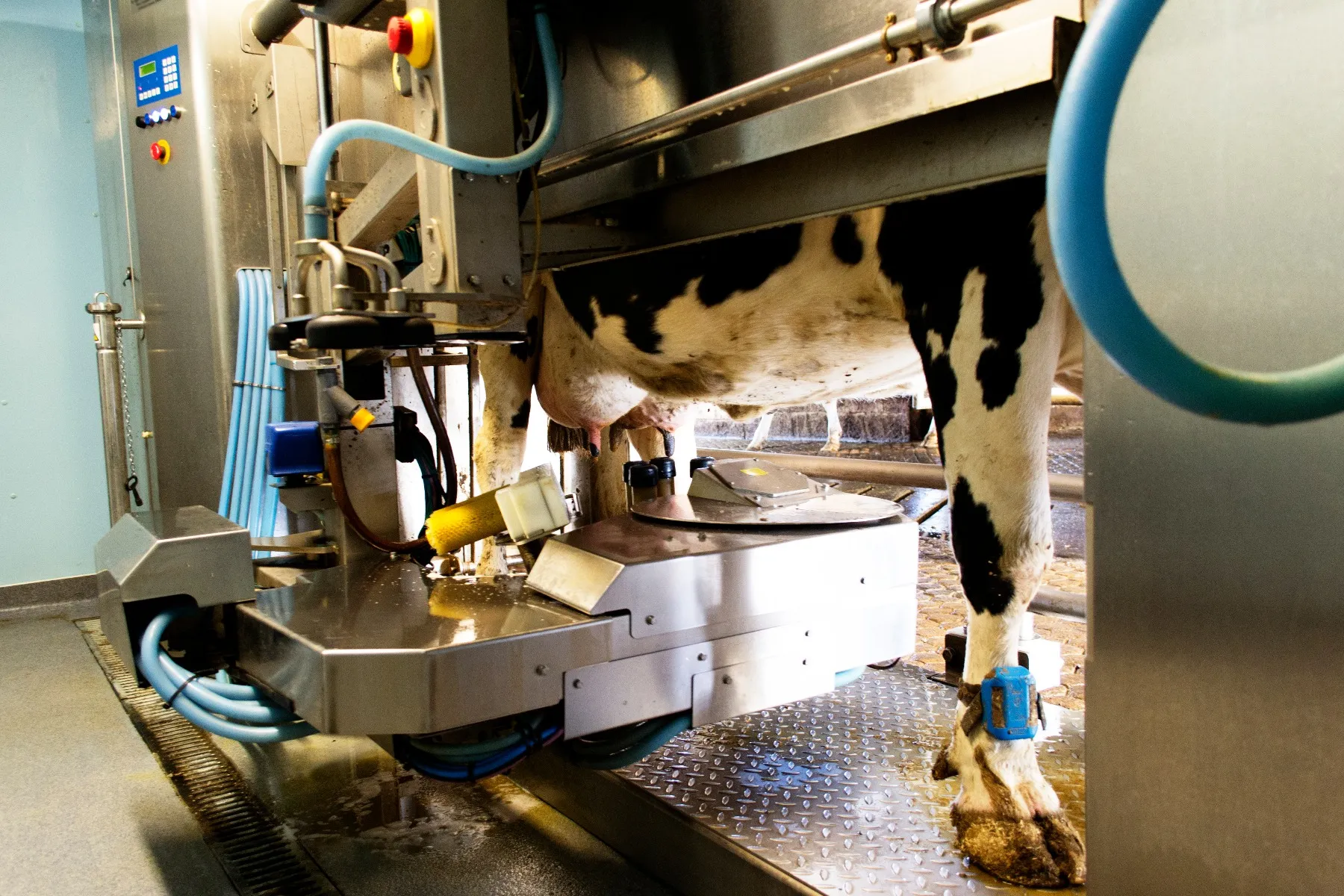Robotic Milking Systems
- 5 May 2021
- 0 Comments

It is estimated that 10% of UK farms already use robotic milking, but they also constitute 35% of all new milking systems being purchased. In Holland 40% of dairy farms are automated, with some Scandinavian countries as high as 50%. The number of cows milked in robots is expected to more than double in the next 5 years.
The 3 biggest reasons for choosing automated milking continue to be:
- Improved lifestyle and flexibility with working routine
- Desire not to have to manage as much employed labour
- Improved cow health – earlier detection of illness due to robot data, less standing time and improved hoof health
Nutritional Considerations
which many nutritionists fall into. Careful consideration should be taken to balance the energy provided both in the base ration and through the robot feeds. 80% of the energy required for the average yield cow should be met in the base ration to encourage visits to the milking station.
Farm Case Study


Farm Owners: TA & R Owens
Farm Location: Argoed Farm, Cenarth, Carmarthenshire
Robot Installation: March 2018
Model: 2 x Fullwood Merlin
| 2018 Milking Parlour |
2020 Robots | Difference | |
| 305-day milk production |
7,015 | 8,250 | +17.6% |
| Cows in milk | 60 | 1100.32kg | +50 |
| Feed rate per/L | 0.26kg | +0.06 | |
| SCC | 192 | 185 | -7 |
Q. What were the biggest reasons for choosing robots?
Q. What has been the biggest benefit of milking with robots versus a milking parlour?
Another benefit is that most of our fieldwork is done by ourselves and during the silaging time, by having the robots we don’t need to stop and go milking and miss out on crucial time in the field, it has given us more flexibility.








